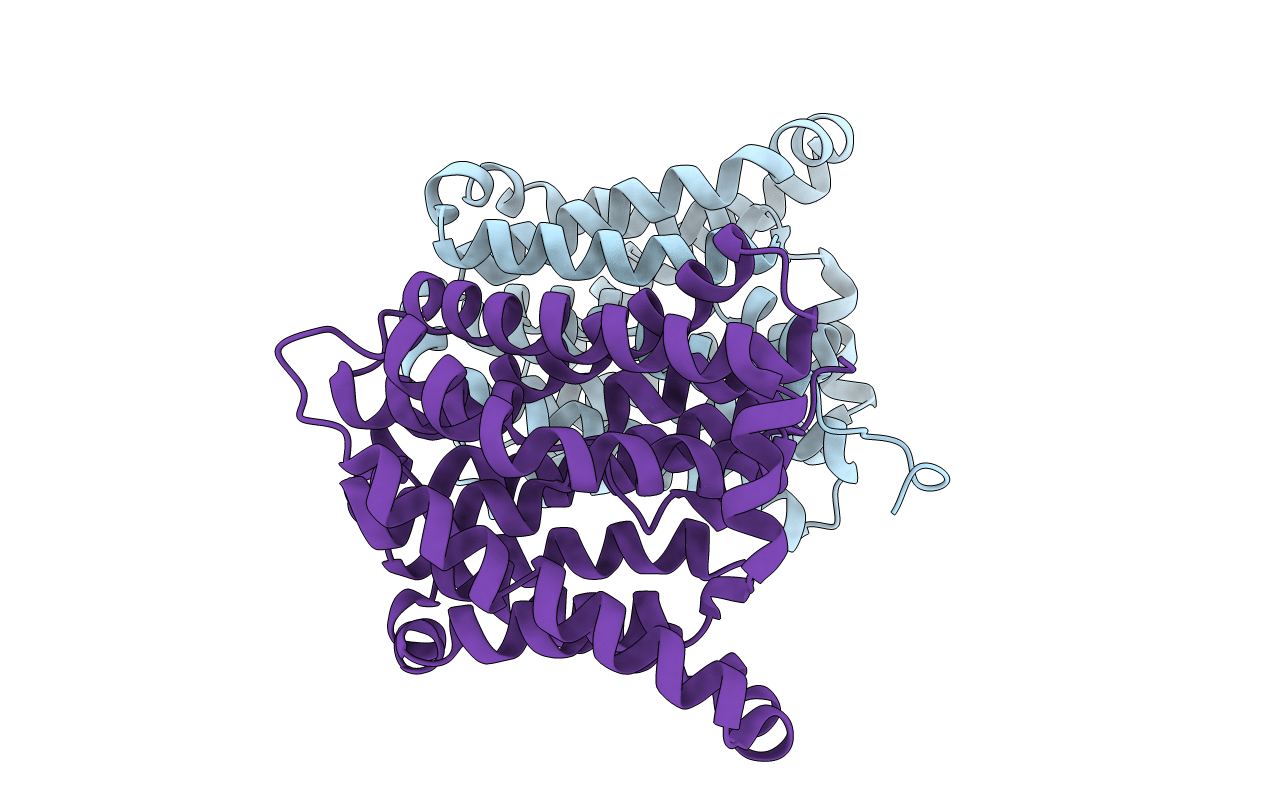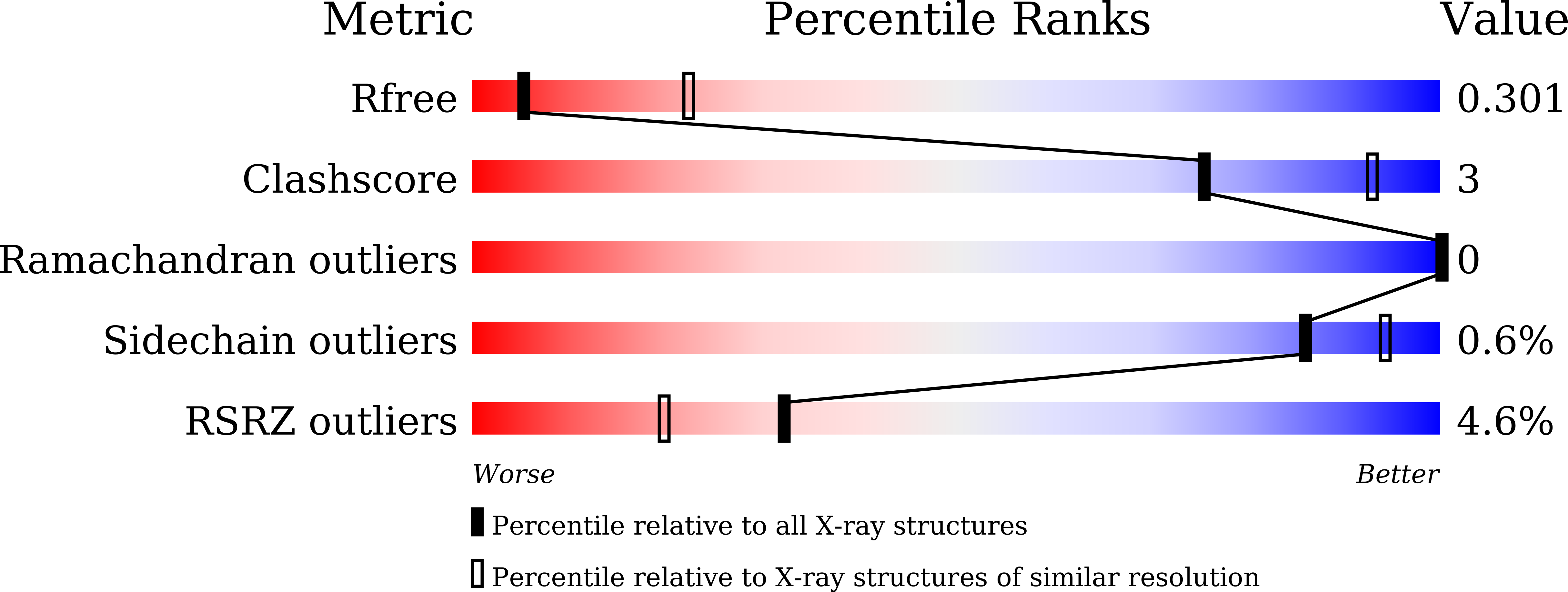
Deposition Date
2020-09-03
Release Date
2021-01-13
Last Version Date
2023-11-29
Entry Detail
PDB ID:
7CYG
Keywords:
Title:
Crystal structure of a cysteine-pair mutant (Y113C-P190C) of a bacterial bile acid transporter before disulfide bond formation
Biological Source:
Source Organism:
Yersinia frederiksenii (Taxon ID: 29484)
Host Organism:
Method Details:
Experimental Method:
Resolution:
3.20 Å
R-Value Free:
0.30
R-Value Work:
0.26
R-Value Observed:
0.26
Space Group:
C 1 2 1


